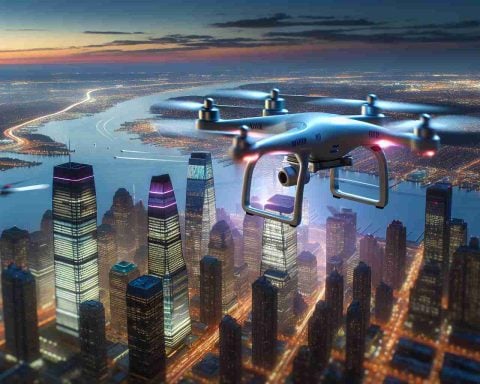Supercomputers and Machine Learning: Revolutionizing Weather Forecasting
In the realm of severe weather prediction, technology is taking an unprecedented leap. A new wave of AI-driven technologies is poised to transform how we understand and respond to life’s climatic tempests. Traditional models have served us well, but the integration of machine learning and supercomputing promises predictions with unmatched precision and speed.
At the forefront of this revolution is the use of AI to analyze vast datasets collected from satellites, radars, and sensors around the globe. Machine learning algorithms are capable of sifting through complex data to uncover patterns that elude conventional forecasting methods. As a result, forecasters can now predict severe weather events, such as hurricanes, tornadoes, and floods, with remarkable accuracy and grant communities extra time to prepare.
The Future: Beyond Mere Prediction
But predicting weather alone is not the endgame. Researchers are working on developing AI systems that go beyond mere forecasts to provide decision-makers with optimal strategies during disasters. This includes generating real-time evacuation routes, optimizing resource distribution, and even providing personalized alerts to individuals most at risk.
As climate change amplifies the frequency and intensity of severe weather events, the need for advanced prediction and response systems is more pressing than ever. This cutting-edge nexus of artificial intelligence and meteorology is not just about surviving the storm, but thriving despite it. With technology at the helm, could a new era of safer, more resilient communities be within reach?
How AI and Supercomputers Are Shaping the Future of Weather Resilience
As the climate crisis intensifies, the demand for sophisticated weather forecasting has never been more critical. Enter the era of AI-powered supercomputing, where unprecedented innovations are setting the stage for a quantum leap in weather prediction and disaster management. Here, we delve into the latest advancements and explore how they promise to reshape our world.
Innovations in Weather Prediction
With the advent of supercomputers, machine learning algorithms can now process colossal amounts of data in fractions of the time it used to take. These systems not only predict weather but also determine how these predictions interact with various elements to impact communities. Recent innovations include:
– Data Assimilation: By integrating disparate data sources, AI refines models with a higher resolution, allowing forecasts to improve in scope and accuracy.
– Predictive Insights: AI models can predict secondary environmental impacts like crop yield reduction or disease spread following severe weather, aiding agricultural and health sectors.
Pros and Cons of AI in Weather Forecasting
Pros:
– Enhanced Accuracy: Improved data processing leads to more precise forecasting, potentially saving lives and property.
– Real-Time Adaptations: AI systems can adjust predictions in real-time as new data emerges.
– Cost Efficiency: Reducing the need for extensive human input can lead to more cost-efficient operations.
Cons:
– Reliance on Data Quality: The outcomes are only as good as the data input; poor-quality data can negatively affect predictions.
– Complexity of Systems: The advanced systems require substantial technical expertise to implement and maintain.
Use Cases in Urban Planning and Disaster Management
In regions prone to severe weather, AI-driven insights are proving indispensable:
– Urban Development: Cities are using these insights to design infrastructure resilient to climate impacts, such as flooding and heatwaves.
– Disaster Response: AI-generated analytics are enhancing emergency protocols by suggesting efficient evacuation routes and resource allocation where they are needed most.
Market Analysis and Predictions
The weather forecasting industry is set for a remarkable transformation, with projections indicating a significant rise in AI integration. According to industry analysts, the global market for AI in weather prediction could grow exponentially, driven by increasing stakeholder investment in disaster mitigation.
Security and Privacy Considerations
As AI systems handle vast amounts of sensitive data, ensuring the security and privacy of this information becomes crucial. Firms are adopting strict encryption and verification protocols to safeguard data integrity, reassuring public sector and individual stakeholders alike.
Sustainability and Environmental Benefits
AI-assisted weather technology is paving the path for more sustainable ecosystems by delivering early warnings that allow for prompt and effective responses to extreme weather events. This proactive approach helps reduce environmental damage and supports biodiversity conservation efforts.
In conclusion, the integration of AI and supercomputers in weather forecasting marks the beginning of a new chapter in our battle against climate adversities. As technology continues to evolve, the potential for safer, more informed, and resilient communities is within reach, promising a future where we can thrive amidst nature’s most challenging moments.
For more innovations and insights into advanced technology, visit the IBM and NVIDIA websites.




















